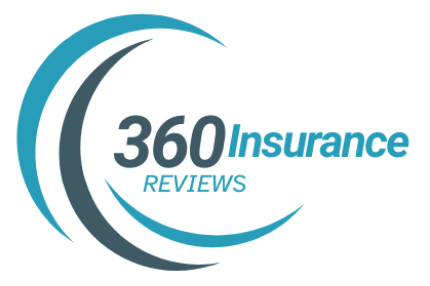Understanding Heavy Equipment Insurance: A Comprehensive Guide for Construction Businesses
Heavy equipment plays a pivotal role in the construction industry, serving as the backbone of operations. From excavators to bulldozers, these machines are essential for project completion. However, the significant investment in heavy machinery brings the potential for loss or damage, making heavy equipment insurance crucial for safeguarding your business. This article delves into the intricacies of heavy equipment insurance, exploring its types, coverage options, cost factors, and risk management strategies.
What is Heavy Equipment Insurance?
Heavy equipment insurance is a specialized form of coverage designed to protect construction businesses from financial losses associated with owning and operating large machinery. This insurance typically includes protection against physical damage, theft, and liability claims. Whether you operate cranes, bulldozers, or other heavy machinery, a tailored policy can help your business recover swiftly from unforeseen setbacks.
Moreover, heavy equipment insurance can be customized with endorsements such as inland marine coverage, which protects machinery during transport or while stored at job sites. This flexibility ensures that contractors can minimize downtime and financial losses, keeping projects on schedule.
Types of Heavy Equipment Insurance Policies
Construction businesses have unique needs, and it’s essential to tailor insurance policies accordingly. Here are some key types of coverage to consider:
-
Inland Marine Insurance: This protects machinery during transport and while temporarily stored at job sites. Given that equipment is often moved between locations, this coverage is vital to mitigate the risks of damage or theft during transit.
-
Commercial Property Insurance: This policy protects equipment housed at specified locations against risks such as fire and natural disasters.
-
General Liability Insurance: Essential for covering third-party injuries or property damage claims arising from equipment use, this insurance is crucial in high-risk construction environments.
Customizing your policy to meet specific business needs is essential for ensuring maximum protection.
Coverage Risks of Heavy Equipment Insurance
Working with an experienced insurance agent can help you identify the best coverage options for your business. Heavy equipment insurance can protect against a variety of risks, including:
-
Theft and Vandalism: Job sites are prime targets for equipment theft, costing construction businesses approximately $400 million annually in the U.S. Insurance can help cover replacement costs and repairs.
-
Transit Accidents: Damage to equipment during transportation can lead to costly delays. Insurance can alleviate these burdens.
-
Natural Disasters: Coverage for weather-related events, such as hurricanes or wildfires, protects your machinery, although flood coverage often requires specific endorsements.
-
Operational Hazards: This includes incidents like rollovers or accidental damage during operation.
Optional add-ons, such as replacement cost endorsements, allow for compensation based on current market values, enhancing financial stability in case of a loss.
Factors Influencing the Cost of Heavy Equipment Insurance
The cost of heavy equipment insurance can vary significantly based on several factors:
-
Type of Equipment: High-value machinery, such as cranes or specialized equipment, typically incurs higher premiums.
-
Security Measures: Implementing security measures like GPS tracking and secure storage can lower risk and, consequently, insurance costs. Insurers often offer lower rates for well-maintained equipment that is difficult to steal.
-
Age and Condition of Equipment: Older or poorly maintained machinery usually results in higher insurance costs.
-
Usage Frequency: The nature and frequency of equipment use can affect rates, as heavy wear or high-risk environments increase the likelihood of claims.
-
Geographic Location: Areas prone to severe weather events may see higher premiums. Local regulations and state insurance requirements also influence coverage needs.
By understanding these factors, businesses can make informed decisions to balance cost and coverage effectively.
Proactive Risk Management Strategies
To manage insurance costs, proactive risk management is essential. Here are some strategies:
-
Regular Maintenance: Keeping equipment well-maintained can prevent breakdowns and extend its lifespan, reducing risk.
-
Operator Training: Comprehensive training programs for operators can minimize accidents, leading to fewer claims.
-
Job Site Security: Implementing security measures such as surveillance cameras and on-site guards can significantly reduce the risk of theft.
-
Risk Assessment Partnerships: Collaborating with insurers that provide risk assessment services can offer tailored insights to lower premiums over time.
Selecting the Right Insurance Carrier
Choosing the right insurance provider is just as important as selecting the appropriate coverage. Look for carriers with expertise in the construction industry, as they understand the unique challenges businesses face. Customizable policies ensure you only pay for the coverage you need.
Working with an experienced agent can guide you through complex coverage options and help you find carriers known for efficient claims handling. Efficient claims support is critical for minimizing downtime in the event of an incident.
Conclusion
Heavy equipment insurance is a vital investment for construction businesses, ensuring protection against various risks while safeguarding valuable machinery. By understanding the types of coverage available, the factors influencing costs, and implementing proactive risk management strategies, you can create a robust insurance plan that supports your business’s success. If you’re ready to protect your heavy equipment, consult with an experienced insurance agent to discuss your needs and obtain a personalized quote.
For more information on construction insurance and risk management strategies, visit the National Equipment Register or Central Insurance.
